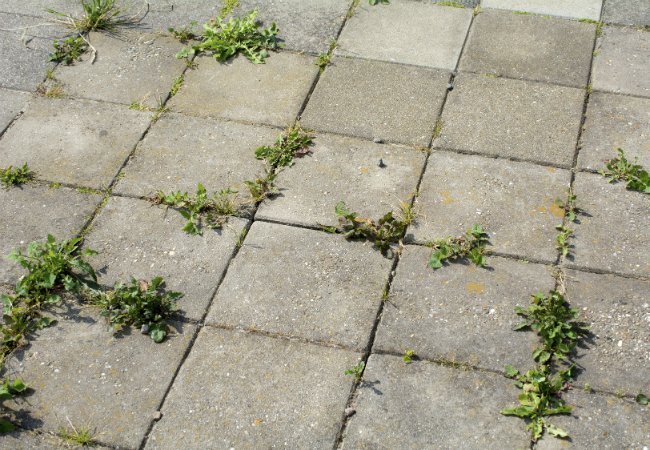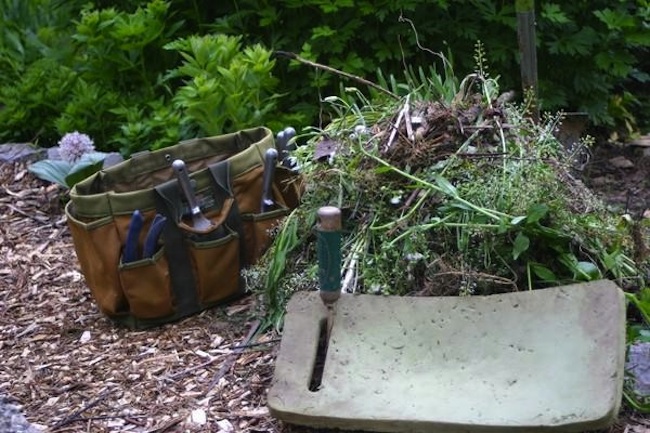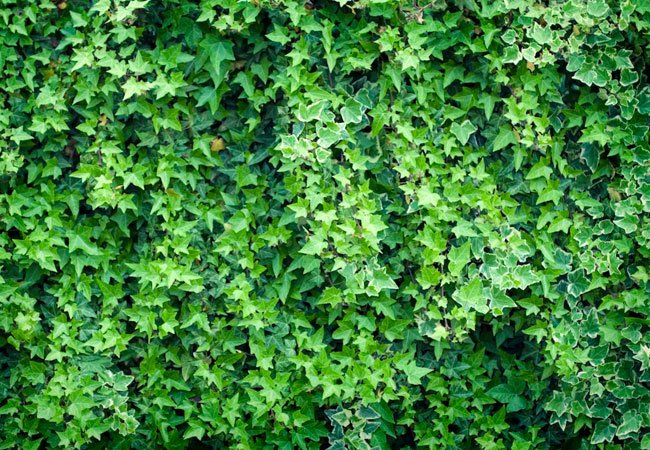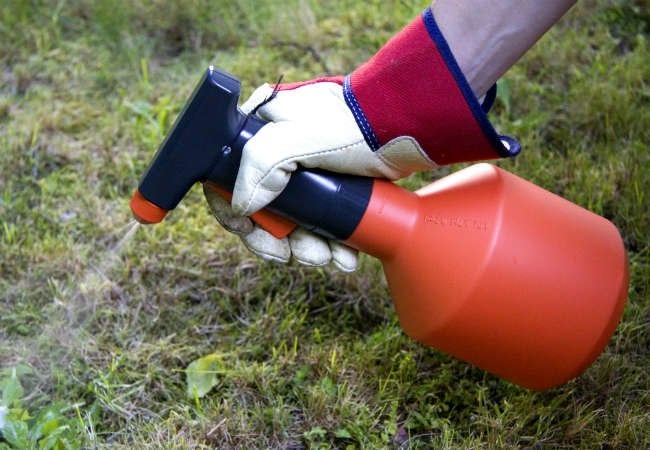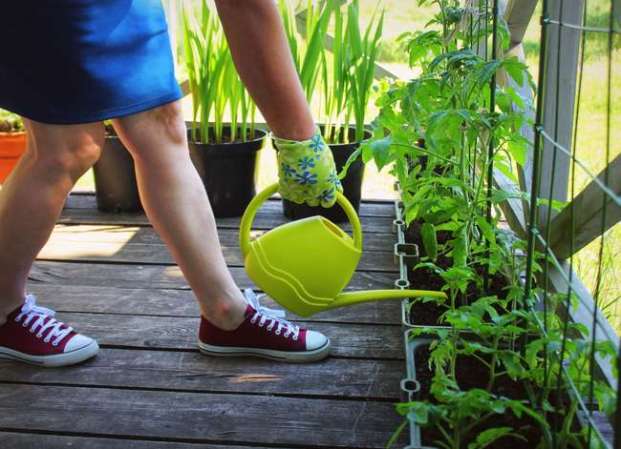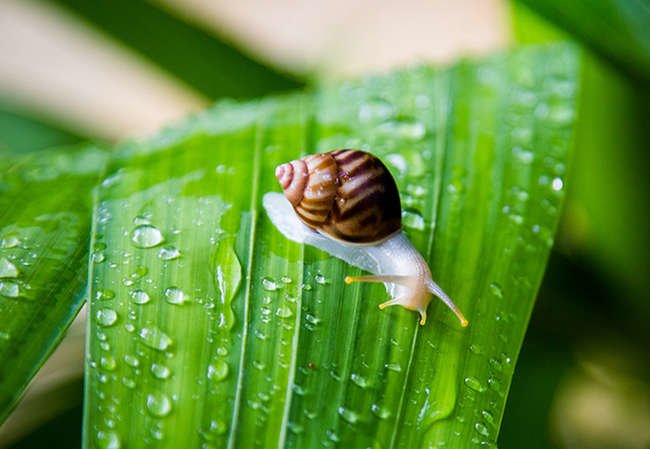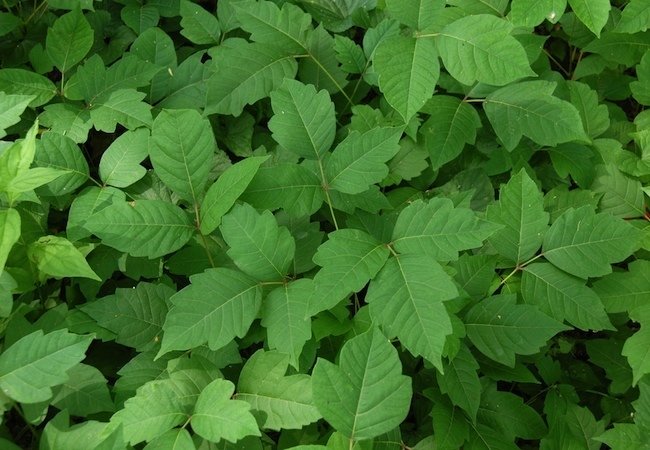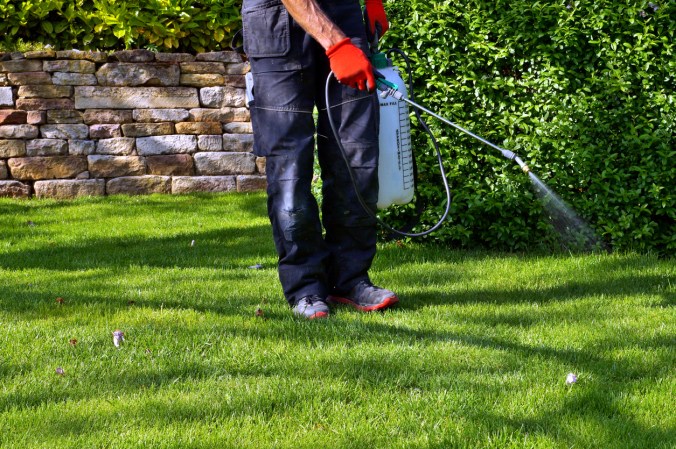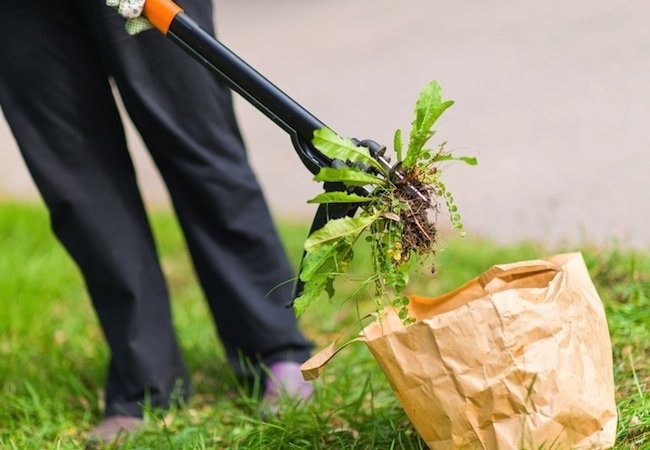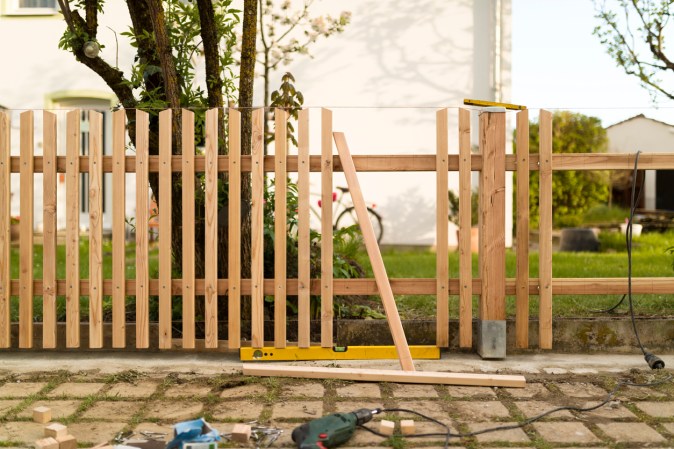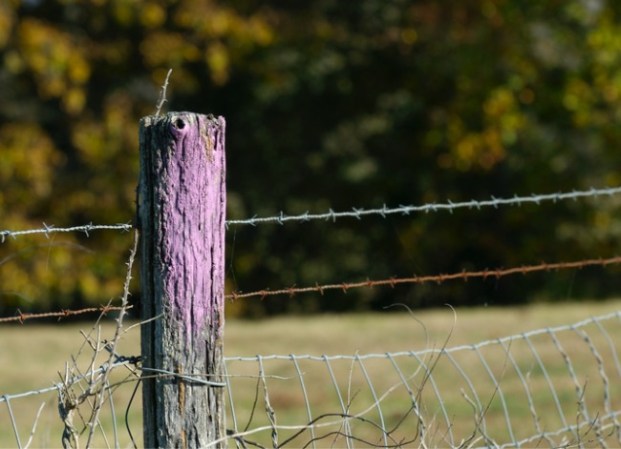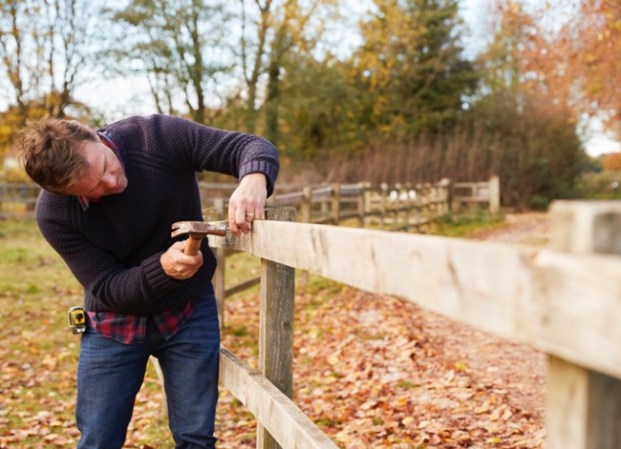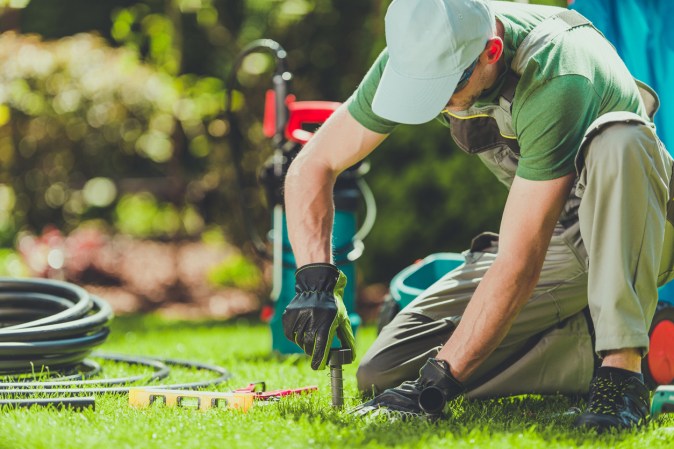We may earn revenue from the products available on this page and participate in affiliate programs. Learn More ›
You work hard on your garden, so the last thing you want is gnarly weeds littering your lawn or popping up smack dab in the middle of your prized petunias. Weeds can even sneak into your driveway or sidewalk, becoming a tripping hazard as well as an eyesore.
There’s no need to spend your summer on hands and knees yanking them out, and no reason to resort to pricey chemical killers whose toxins can damage your property. Instead, follow any of these easy, practical methods for a home remedy to kill weeds and attack those irksome interlopers ASAP. Just take care not to douse nearby plants because these equal-opportunity herbicides won’t discriminate between weeds and your landscaped lovelies.
By learning how to make weed killer, you can stop unwanted weeds in their tracks while using inexpensive household ingredients that won’t harm the environment. Keep reading to find out how to make a 3-ingredient homemade weed killer that will keep yard and garden maintenance to a minimum—leaving you with free time to do the things you prefer.
RELATED: The Best Landscape Fabric for Blocking Out Weeds
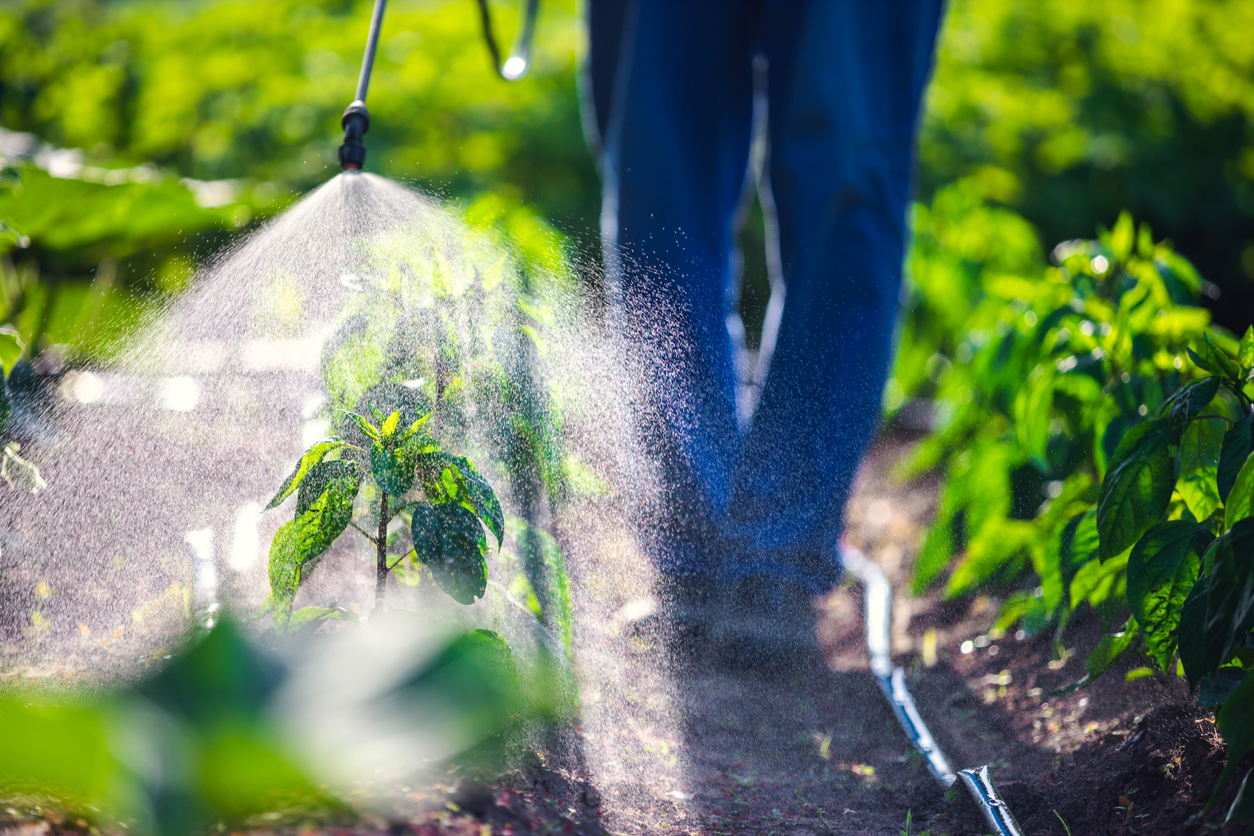
Making a Case for Homemade Weed Killer
A trip to any garden center reveals dozens of chemical products for killing a variety of weeds. Gardeners who have invested time in planting and landscaping for the ecological benefits tend to shy away from chemicals that leave toxic residue in the soil or could leach into storm drains. Glyphosate, a common ingredient in chemical weed killers, may also be detrimental to honeybees, according to a study published in the Journal of Experimental Biology.
While a homemade weed killer recipe will not be as strong as some of the commercial products that are available, it’s immeasurably safer—for the environment and for pets and children who come into contact with treated areas. You may need to treat some weeds twice or even three times to kill them, but you’ll know you’re using the safest, most natural method of weed control.
For those looking to produce organic vegetables and fruits, using a non-chemical herbicide is essential because it won’t leave toxins in the soil that could affect the natural quality of the produce.
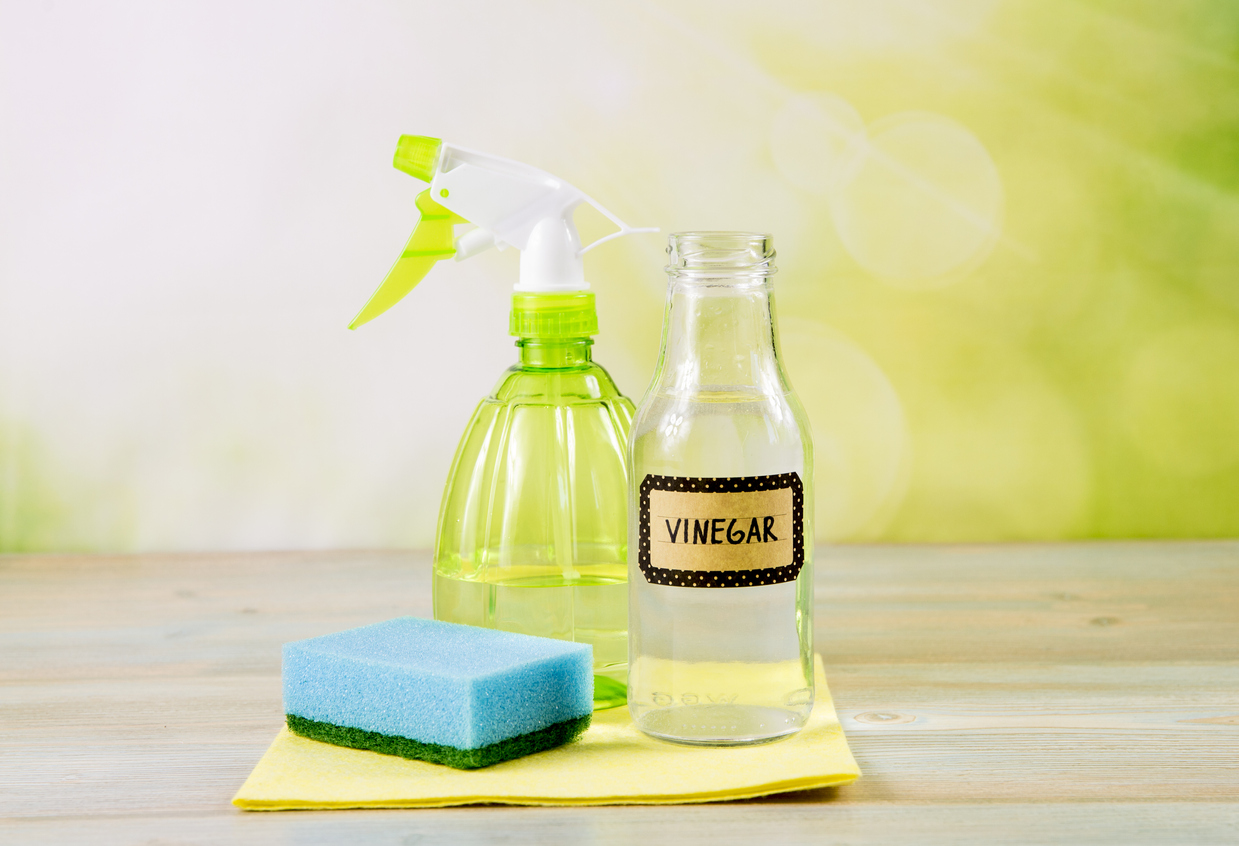
How to Make Weed Killer
Its ingredients look harmless enough sitting on your kitchen counter, but this 3-ingredient homemade weed killer makes for a tenacious trifecta.
Supplies
- Vinegar
- Dish detergent
- Table salt
- 1-gallon jug of water
- Spray bottle
Why This Recipe Works
The two active ingredients in this recipe are vinegar and salt—vinegar contains acetic acid, a desiccant that draws moisture out of foliage, which will kill a variety of weeds. Salt, or sodium chloride, is also a desiccant, and it boosts the vinegar’s ability to kill weeds. Be advised, though, that salt can seep into the soil and kill nearby desirable plants, so use this weed-killing solution judiciously, taking care to spray only the weeds you want to kill.
Dish soap is included for its surfactant properties. Rather than the vinegar and salt solution running off the weed’s leaves, the dish soap holds it in place, which allows the ingredients to seep into the leaves. This is especially helpful when you’re trying to kill weeds with waxy foliage.
RELATED: Keep, Don’t Kill: 9 Weeds to Welcome
STEP 1: Mix the ingredients.
The simplest base ingredient for a homemade weed killer is a 1-gallon jug of water. You can use an old milk jug that’s been rinsed out and filled with tap water or use a gallon of distilled water.
- Pour about 1.5 cups of water out of the jug to make room for the active ingredients.
- Add 1 cup of table salt to the jug of water. Using a funnel makes this task simpler.
- Add 1 cup of household vinegar to the jug.
- Add 1 tablespoon of liquid dish soap.
- Swish the jug around until the salt dissolves.
- Fill a spray bottle with the solution, and store the remaining solution for future refills.

STEP 2: Apply weed killer to stems and leaves.
Spritz the homemade weed killer unsparingly onto the stems and leaves of the undesirables in flower or vegetable beds during sunny, low-wind conditions. Avoid spraying weeds early in the day when the foliage could still be damp, which will cause the solution to run off. Don’t get the solution on concrete sidewalks, driveways, or patios because salt can discolor or erode concrete, resulting in flaking (spalling) the surface. And don’t spray when it’s windy outside—you want to avoid getting overspray on plants that you don’t want to kill.
Don’t expect to see overnight results—depending on how hardy the weeds are (dandelions are especially tough), it may take up to 2 weeks to kill the plant. Other tender weeds, such as purslane, may begin wilting in as few as 2 or 3 days. Shrubs and weedy plants may need repeated treatments over a few weeks, but for eco-minded gardeners, it’s worth it to avoid the need to use a commercial brush killer.
STEP 3: Remedy any spraying accidents, and monitor the area for new weed growth.
If you accidentally sprayed the homemade weed killer recipe on a plant or bush, rinse the solution off with the hose right away. Since this DIY weed killer isn’t as strong as chemical weed killers, rinsing it off before it can dry is usually sufficient to protect the plants.
Be proactive—it’s much easier to kill young, new weeds with a homemade solution than it is to kill mature weeds that have developed root systems. Take the spray bottle to the garden every couple of days and lightly spray any new weeds that have popped up, and that’s all you’ll need to do to keep your garden or flower bed weed-free.
Alternative Weed Killing Home Remedies
While the vinegar and salt solution is a common household weed killer, it’s not the only alternative to chemical herbicides. Check these out if you’re looking for additional weed-killing home remedies that won’t harm the environment.
METHOD 1: Cornmeal Weed Killer
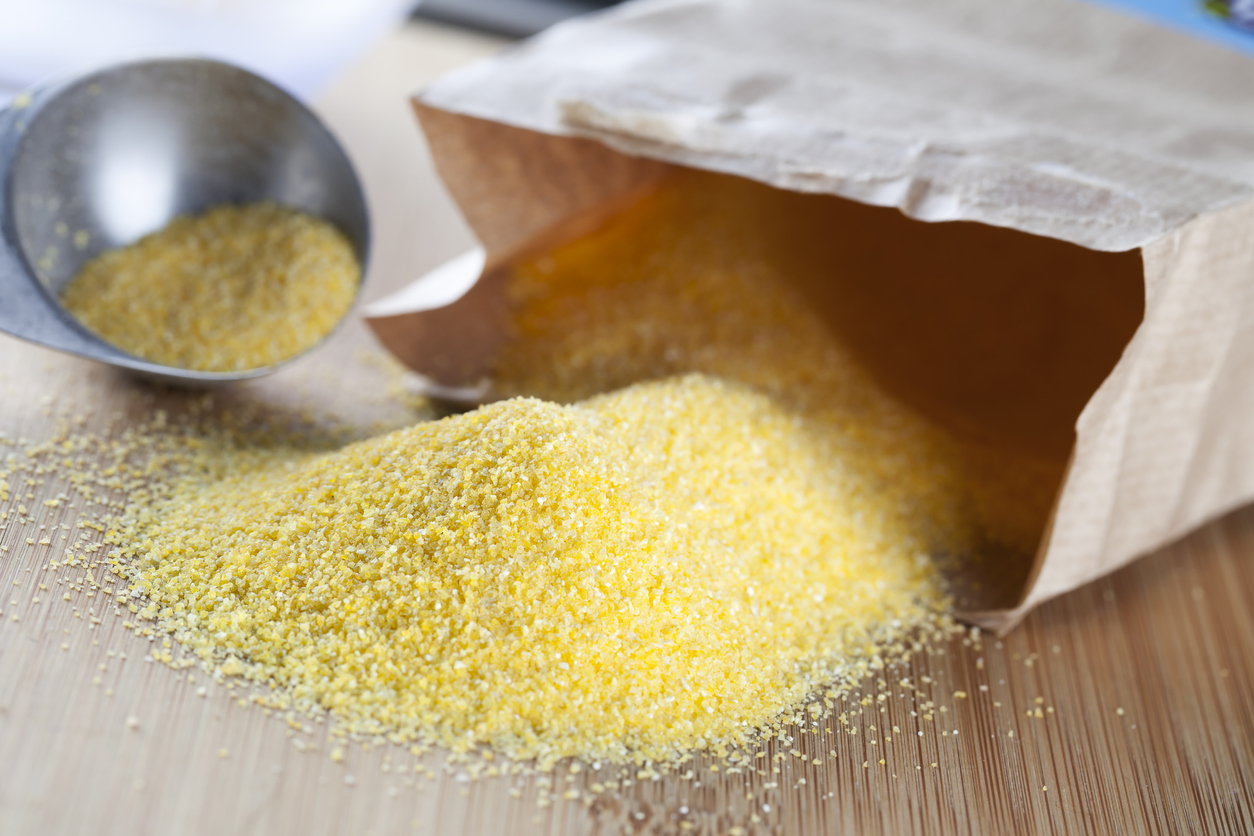
Supplies
Who knew you could use cornmeal for weeds? Scattered over weed seeds, as opposed to mature weeds, corn gluten meal acts as a natural, nontoxic pre-emergent that can prevent germination. Unlike chemical weed killers, a commercial herbicide that contains corn gluten, such as Espoma Weed Preventer, may have only natural ingredients, so you need not worry about harmful toxins.
- For optimal results, begin by tilling the soil in an established flower or vegetable bed to unearth weed seeds.
- Sprinkle the corn gluten meal directly over the seeds during a dry weather period.
- Steer clear of plots with recently sewn flower or vegetable seeds as the corn gluten meal can keep beneficial seed from germination along with the weed seeds.
- Corn gluten meal is also prized by DIY landscapers who want to keep weed seeds from sprouting in their lawns. When spread over an established yard with a broadcast spreader, corn gluten meal is an effective and organic way to keep grass lush and weed-free.
METHOD 2: Very Hot Stuff

Supplies
Put the kettle on, boil some water, and then take it outside. Pour the hot water over pesky plants to scorch them. Aim carefully because the hot liquid can also burn surrounding plants—or your toes! While one application may be sufficient for weeds with shallow root structures, perennials with long taproots, such as clover or other legume varieties, may require two or three applications before reaching their permanent demise.
A second method of killing weeds with heat requires using a weed burner attached to a propane bottle. Attach the nozzle of the burner hose to the bottle, turn on the burner’s valve, and use the automatic igniter to spark the flame. Adjust the valve to control the size of the flame—a small flame is best for killing weeds located near desirable plants, while a larger flame can be used to burn weeds indiscriminately along fence lines or driveways. Never use a weed burner in dry conditions when there’s a chance it could start a fire. Weed burners are best suited for use on green weeds.
METHOD 3: Reliable Rubout
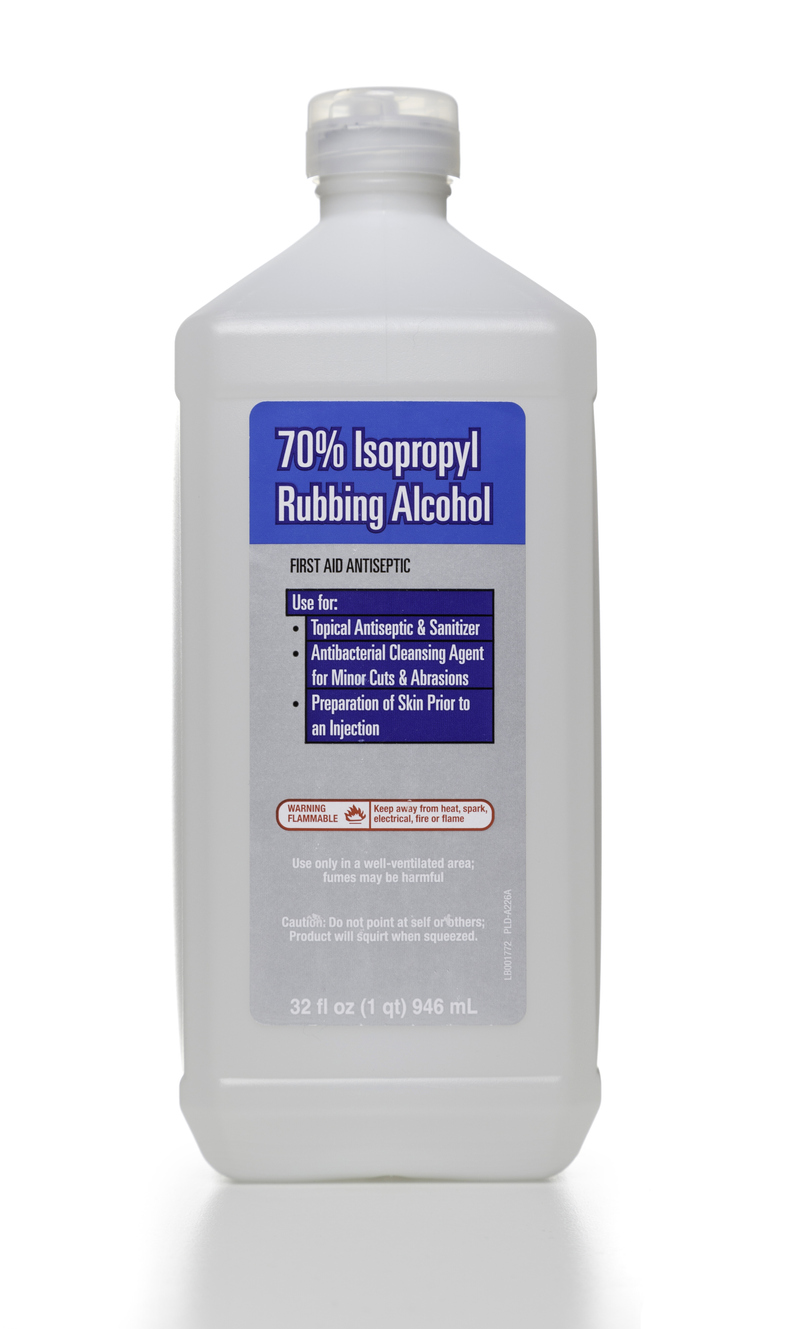
Supplies
- Rubbing alcohol
- Spray bottle
- Dilute 2 tablespoons of rubbing alcohol in a bowl with 4 cups of water.
- Transfer the solution to a spray bottle, and liberally coat the leaves of weeds in flower or vegetable plots, preferably on a sunny day. As the alcohol dries, it will wither the leaves and eventually kill uninvited vegetation.
- As with the vinegar and salt solution, avoid getting the rubbing alcohol solution on desirable plants.
METHOD 4: Salad Dressing Solution
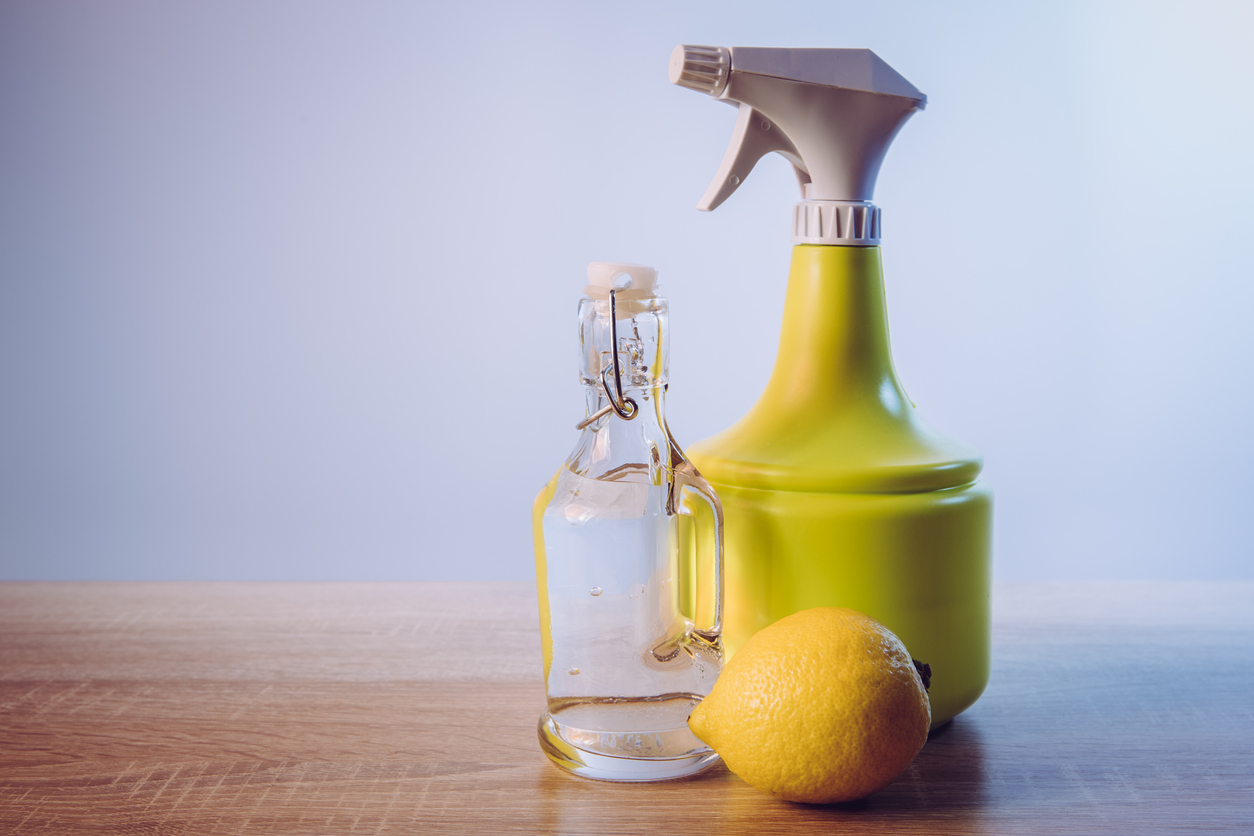
Supplies
- Vinegar
- Lemon juice
- Spray bottle
- 1-gallon jug of water
Like the recipe for making salt and vinegar weed killer, you can make an acidic solution that kills weeds without leaving salt residue behind in the soil by substituting lemon juice for salt. This homemade solution is slightly less potent than the one that contains salt, so plan to treat weeds every couple of days until you see signs of wilting.
- Mix 1 cup of vinegar and 1 cup of lemon juice in a 1-gallon jug of water.
- Swish around until the solution is blended.
- Pour into a spray bottle, and store the leftovers for future use.
- Spray on weeds.
METHOD 5: Newspapers

Supplies
- Old newspapers
Don’t throw out those old newspapers when you’ve finished reading them—they make excellent weed killers. Layering newspapers over weedy spots kills weeds because the sun can’t reach them, so they eventually die.
For the best results, either mow down tall weeds or snip them off at ground level and then saturate the area with water so the newspapers stick. Lay out the newspapers—three or more sheets thick—and then lightly mist the area with water to soak the papers. Add additional layers of newspaper periodically because the original layer will begin to decompose after a while.
Layering newspapers may not be the optimal solution in the front yard because it does nothing for curb appeal. Still, it’s a good option in vegetable gardens where the decomposed paper kills weeds and attracts earthworms that help aerate and improve the garden soil.
Preventing Future Weed Growth
The use of corn gluten meal mixed into the soil around vegetable plants or sprinkled around the bases of roses and other flowers will help keep weed seeds from germinating, and it’s an entirely natural pre-emergent herbicide. Take care not to use it in the soil if you’re trying to grow vegetable or flower seeds, however, as it will keep them from sprouting as well.
Another option for preventing future weed growth is to spread mulch around the base of existing plants. Natural mulch may include wood chips, shredded bark, and dry leaves. At least 2 inches of mulch is desirable for keeping weed seeds from sprouting, and mulch adds a decorative, finished look to the landscape, so it’s suitable for use in the front yard as a weed-killing design element.
RELATED: 13 Plants You Never Knew Were Weeds
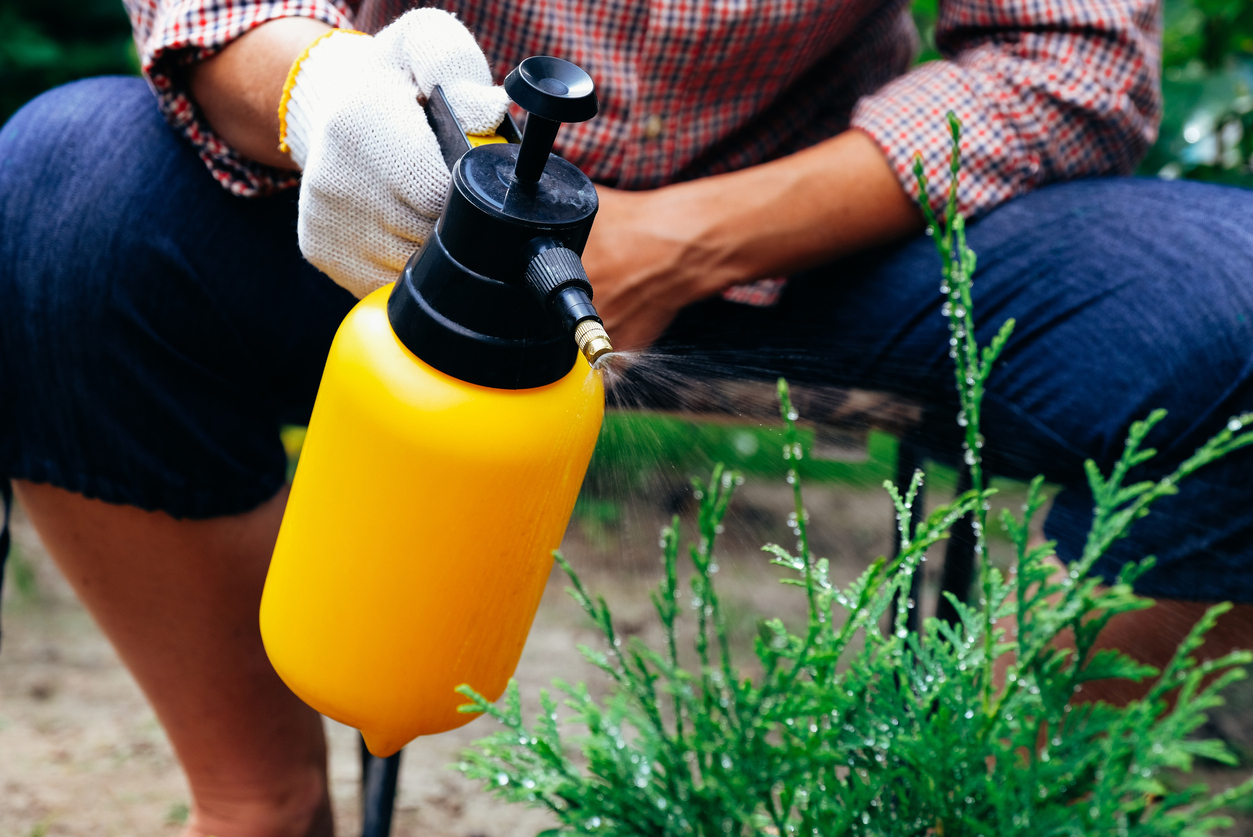
FAQs About How to Make Weed Killer
Q. Is household bleach a good weed killer?
When applied full strength to some weeds, such as grass growing in sidewalk cracks, bleach will often kill the weeds, but bleach can leach into underground water sources and is more toxic than vinegar.
Q. Is mixing vinegar and Dawn dish soap safe?
Yes. Dawn dish soap acts as a surfactant to help the vinegar solution remain on the weeds as it dries.
Q. Does vinegar kill weeds permanently?
Not always. Vinegar will kill the above-ground foliage, and that’s sufficient for killing many weeds, but weeds with robust root systems may regrow from the roots.

